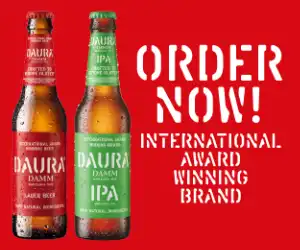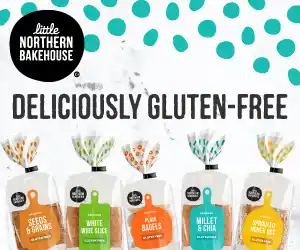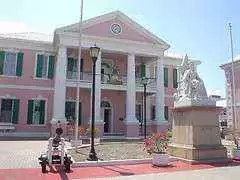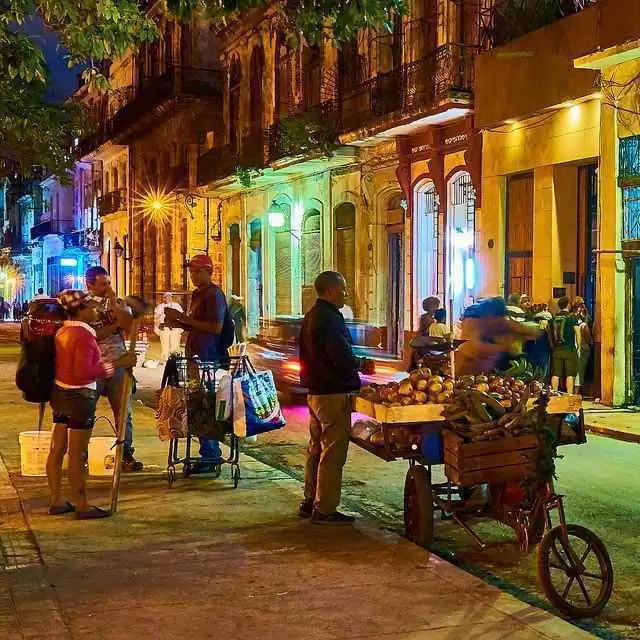Celiac.com 08/04/2016 - Holidaying or backpacking in South America might seem daunting for travellers with celiac disease, but eating gluten-free is actually very manageable, providing you're organised and do plenty of research. Unfortunately there seems to be a lack of reliable information on the web about eating gluten-free in South America, which is what inspired this article. So, we will go through each country, highlighting 'safe' foods, those that are naturally gluten-free, and addressing any problems you may encounter.
The Good News!
In general, the South American diet contains less gluten than the typical western diet, with white rice and potatoes being the staple carbohydrates for most countries. So there will probably always be options on the menu that are naturally gluten-free. And if in doubt, you can always stick to simple dishes like grilled meat or fish, and fresh salads.
Celiac.com Sponsor (A12):
Celiac disease and the gluten-free diet are much less common in South America, so although products in supermarkets may be labelled 'gluten-free' most people probably don't fully understand what this means. The language barrier can cause problems when enquiring about gluten-containing ingredients and cross-contamination. So it's advisable to learn or print out some useful phrases to help you explain your dietary requirements.
Eating Gluten-Free in Brazil
Labelling Laws: All packaged foods must be labelled either 'contén glúten' or 'não contén glúten'. You can use these phrases in restaurants too, although the serving staff may not really understand what this means.
Advice: English is widely spoken, especially in the major cities, so communicating your dietary requirements shouldn't be too difficult.
Naturally Gluten-Free Brazilian Foods:
- Tapioca/cassava flour – often used in place of wheat flour to thicken sauces. Tapioca pancakes are a popular breakfast food, and cassava fries are a popular snack, both of which are naturally gluten-free, but always check about cross-contamination.
- 'Pão de queijo' – These cheese balls are traditionally made using tapioca flour so are naturally gluten-free, but always check because in some hotels they'll contain wheat flour as well.
- BBQ meat – Brazil is famous for it's barbequed meats, which are not usually coated in flour.
- Top Dish: 'Moqueca' – This fish stew is cooked in a sauce of coconut milk, palm oil, parselt, garlic, tomato puree and peppers. These are the staple ingredients of many meals in the north of Brazil, which is a particularly good area for celiac travellers to visit.
Eating Gluten-Free in Peru
Labelling Laws: There are no laws in Peru which require products to be labelled 'gluten-free', and most people will not have come across celiac disease.
Advice: Lima is probably the best city to eat gluten-free, as it has some of the best restaurants in the world and very experienced, knowledgeable chefs. So use words like 'trigo' and 'cebada' to explain that you can't eat wheat and barley, and you should be understood. The main problem in Peru is fusion cuisines, like 'chifa', which are heavily influenced by Asian cooking and nearly always contain soy sauce. Wheat flour is often used to coat foods before frying in Peru, and is often used to thicken sauces, so ensure you know the basic Spanish phrases to explain your needs.
Naturally Gluten-Free Peruvian Foods:
- Quinoa – This is the staple grain in Peru, and you'll find soups and stews containing it everywhere.
- 'Tamales' – Corn flour is used to make this breakfast food or snack, which is steamed in a corn husk and filled with meat or cheese.
- 'Ceviche' – This popular dish has a very basic recipe of raw fish, citrus juices and seasoning, so it's always gluten-free.
- Top Dish: 'Rocoto Relleno' – This is a vegetarian dish of stuffed hot peppers.
Eating Gluten-Free in Argentina
Labelling Laws: Argentina has a law that requires packaged foods to be labelled 'sin TACC', if they are suitable for those on a gluten-free diet.
Advice: Many traditional dishes are naturally gluten-free, so you should find suitable meals on most restaurant menus. However the language barrier can be a problem in more rural areas. Buenos Aires is one of the best cities in South America for celiacs, as it has a few gluten-free restaurants and even a bakery.
Naturally Gluten-Free Argentinean Foods:
- Steak – Argentinean steaks are famous around the world, as are usually served with the dressing on the side, with salad or vegetables. Sometimes it's also served with fried potatoes or chips which you'll need to ensure are suitable.
- 'Fainá' – This flatbread is a popular snack, made from chickpea flour. It's naturally gluten-free, but always check that wheat flour hasn't been added as well.
- 'Asado' – Barbequed meats are also popular in Argentina, and should be naturally gluten-free.
- Top Dish: 'Humitas' - This snack is made from seasoned corn flour, boiled in a leaf or husk, very similar to Peruvian 'tamales'.
Eating Gluten-Free in Chile
Labelling Laws: Supermarkets may stock foods labelled as gluten-free, but these are mostly imported from nearby countries, such as Argentina.
Advice: Even snacks like crisps, chocolate and yoghurts may not be suitable for celiacs in Chile, so try to learn the Spanish words you'll need to make reading packaging easier. Similarly in restaurants, English may not be widely spoken and the concept of 'gluten-free' won't be fully understood.
Naturally Gluten-Free Chilean Foods:
- 'Milcaos' – This street food snack is naturally gluten-free, as it only contains mashed potato and raw, grated potato fried in oil. The only risk is cross-contamination from the oil.
- 'Pastel de Choclo' – This popular dish is a stew/pie of ground beef or chicken with olives and raisins. The crust is made from pureed corn, so it's naturally gluten-free.
- 'Paila Marina' – Seafood stews and soups like this are very popular and usually gluten-free, although bread is often served as an accompaniment.
- Top Dish: 'Caldillo de Congrio' – It's not for everyone, but this boiled eel stew is a Chilean favourite.
Eating Gluten-Free in Bolivia
Labelling Laws: There are no labelling laws in Bolivia, and you may struggle to find suitable snacks in supermarkets.
Advice: Bolivia is a tough country for celiac travellers, as English is not widely spoken and the term 'gluten-free' won't be understood by most people. You will need to learn Spanish phrases to help you get by.
Naturally Gluten-Free Bolivian Foods:
- 'Sonso' – This is a street food snack of yucca (similar to potato) and cheese, cooked over a BBQ.
- 'Pique Macho' – Bolivian's like sharing dishes, and this is a particular favourite, containing beef, hot dogs and boiled eggs, served with chips. You'll need to check that the chips haven't been cross-contaminated during frying.
- Quinoa – Similarly to Peru, quinoa is a staple grain in Bolivia, and you will find it in many soups.
- Top Dish: 'Palta Rellena' – This starter is typically Bolivian, an avocado stuffed with chicken and shrimp. It's very simple and naturally gluten-free.
Eating Gluten-Free in Ecuador
Labelling Laws: Similarly to Bolivia, you probably won't see 'gluten-free' labels in supermarkets.
Advice: Wheat doesn't feature heavily in traditional Ecuadorian cuisine, as yucca, plantain and rice and the preferred carbohydrates. But bread is served with nearly every meal, and in international restaurants wheat flour will probably be used, so opt for traditional-looking restaurants.
Naturally Gluten-Free Ecuadorian Foods:
- Plantain – This banana-type fruit is very popular is Ecuadorian cooking and can be served in many ways. 'Chifle' is a particularly popular plantain dish, dried and salted to taste.
- 'Pan de Yuca' – These cheese balls are very similar to the Brazilian equivalent, and are naturally gluten-free, made from tapioca flour.
- BBQ meat – Although barbequed meat is usually safe for celiacs, be aware that in Ecuador it is common to marinate the meat in beer before cooking.
- Top Dish: 'Open Original Shared Link' – The national dish of the country is a fish soup with boiled yucca and red onions.















Recommended Comments